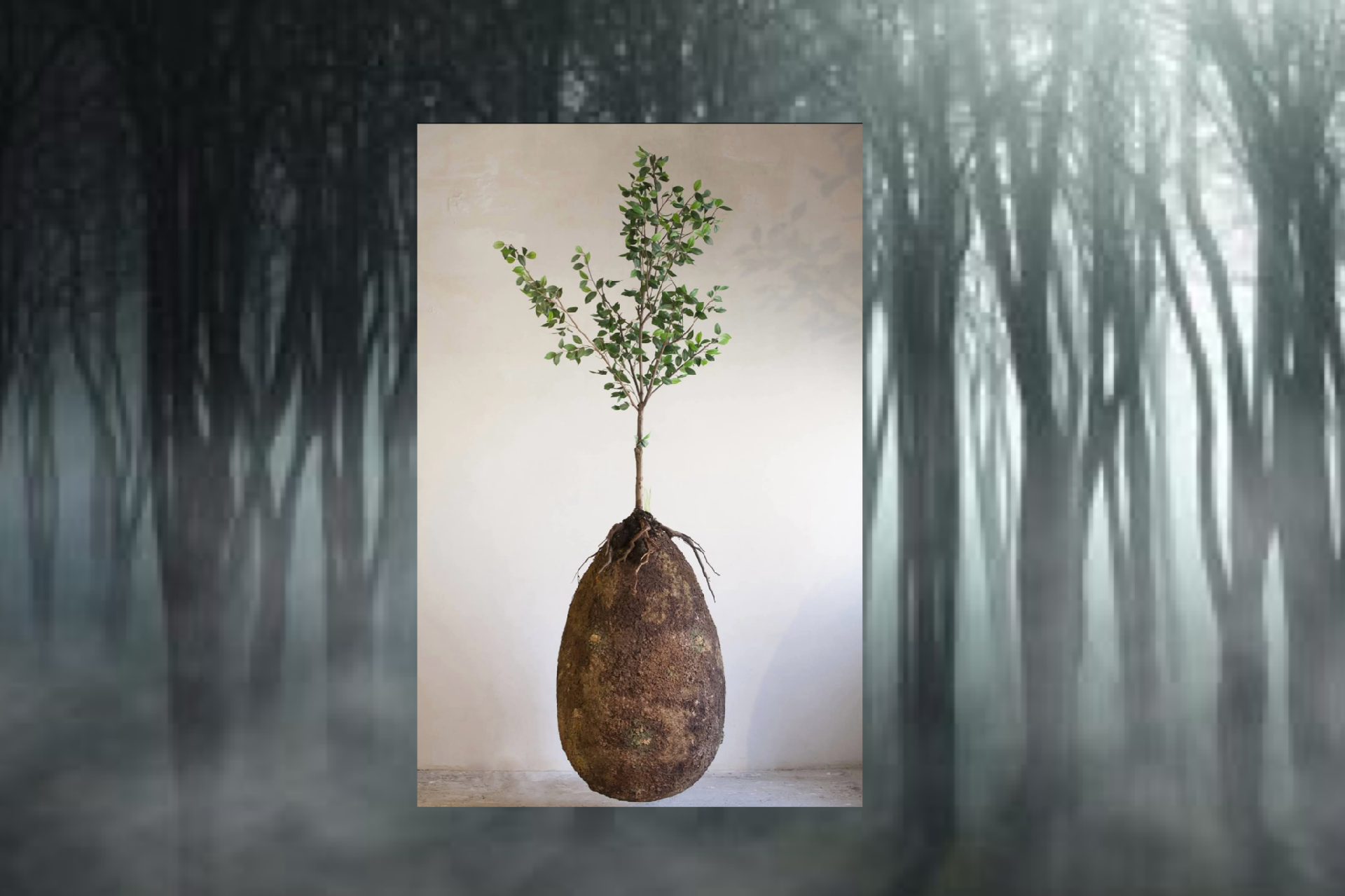
In the face of the environmental crisis and the search for meaning in death, an Italian invention offers a gentle yet radical revolution: turning our remains into trees and transforming cemeteries into thriving forests. A green utopia or the beginning of a new era?
What if, after death, we could become a source of life for the planet? This idea is no longer a myth or a poetic dream. It is now taking shape through Capsula Mundi, literally “the capsule of the world” in Italian, a project by designers Anna Citelli and Raoul Bretzel that challenges our deepest assumptions about human finitude.
Since 2003, during Milan’s Salone del Mobile, the duo has questioned the ecological cost of traditional funerals: each conventional coffin requires cutting down a tree that has grown for 10 to 40 years, often for a brief use and a static memorial. Capsula Mundi offers a circular alternative: our remains or ashes are buried in a biodegradable, egg-shaped capsule that nourishes a tree planted above. Memorial sites become living, evolving forests, far from cold gravestones and sterile pathways.
The project exists in two versions. The first, still in prototype, is a full-body capsule made of plant-based bioplastic, where the unembalmed deceased is placed in a fetal position beneath a young tree. Italian and European laws currently prohibit burials without a traditional coffin. The second version, already on the market, is a biodegradable urn for cremated ashes. Made from starch or plant-based bioplastics, it dissolves within months, allowing the memory tree to immediately take root. Families can choose species such as oak, maple, or olive, naturally embedding each burial into the landscape.
Capsula Mundi aligns with the international green burial movement, reducing resource use, limiting soil pollution, and transforming cemeteries into carbon sinks. Its promise is compelling: contributing to reforestation and biodiversity while turning places of mourning into living ecological spaces.
However, in practice the nutrients provided by bodies or ashes are modest. Ashes can be highly alkaline and may contain heavy metals, requiring careful soil preparation and tree selection. Managing these forested cemeteries requires long-term oversight to ensure the trees thrive and memory endures.
The shift from traditional cemeteries, with their neat rows of graves and engraved names, to living memorial forests challenges our conventional ideas of remembrance. Conventional cemeteries offer a tangible anchor, a fixed address of memory, and a social order. Trees, by contrast, provide a living, evolving memory that grows with the seasons. This new ritual resonates with a generation attuned to ecology and the cycle of life, yet it also unsettles religious traditions, family practices, and the Western notion of individual death. Capsula Mundi invites a new kind of humility: the acceptance that we are no longer just identified deceased, but part of an ecosystem that will outlive us.
Legally, only the ash capsule has so far been authorized in several countries, including Italy, France, Canada, and some US states. The full-body capsule is still awaiting changes to European funeral regulations. In France, a few municipalities are experimenting with memorial forests, but the legal framework remains unclear, particularly regarding land use, long-term management, and family visitation rights.
Capsula Mundi is neither a green gimmick nor a New Age fantasy. Could our forests become our cemeteries one day? Perhaps. But the ecological revolution of mourning cannot happen without social support, legal frameworks, and dialogue with tradition. Death transformed into a tree raises the ultimate question for modernity: what do we wish to leave behind, and for whom?


Comments